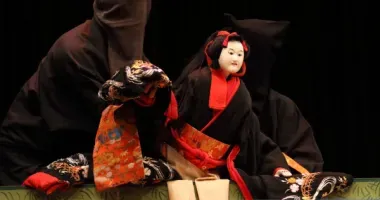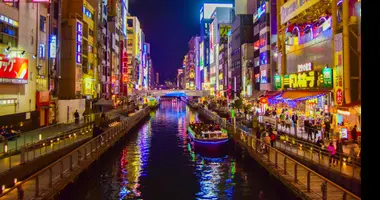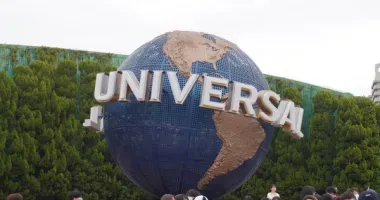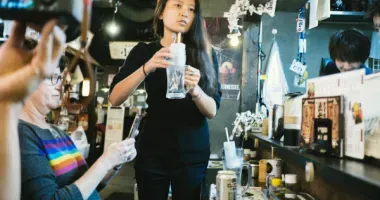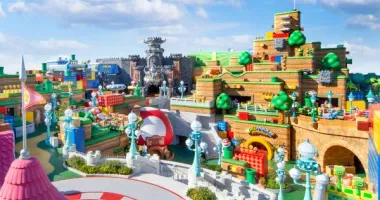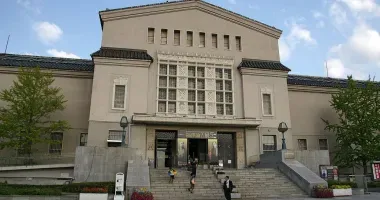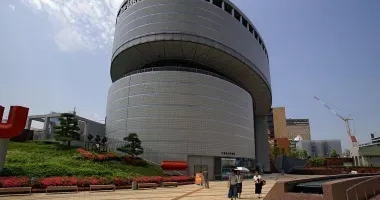National Museum of Ethnology Osaka - Minpaku
The National Museum of Ethnology (Minpaku) in Expo Park, Osaka has a massive collection of materials collected from Japan and from all regions of the world.
National Museum of Ethnology, Osaka - 国立民族学博物館
The National Museum of Ethnology, (Kokuritsu Minzoku-gaku Hakubutsukan), commonly referred to as "Minpaku" in Japanese, is located in Expo Park in Suita, Osaka, the site of the World Expo in 1970.
 Entrance to the National Ethnology Museum & Special Exhibition Hall
Entrance to the National Ethnology Museum & Special Exhibition Hall  Future Ruin, the central patio area of Minpaku sometimes used for exhibits offers a great view of the architectural features of the building designed by Kisho Kurokawa
Future Ruin, the central patio area of Minpaku sometimes used for exhibits offers a great view of the architectural features of the building designed by Kisho Kurokawa
History
Minpaku was constructed in 1977 and designed by Japanese architect Kisho Kurokawa (National Art Center, Tokyo, Hiroshima City Museum of Contemporary Art, Ehime Prefectural Science Museum), one of the founders of the avant garde architectural movement Metabolism, which became internationally recognized with the World Expo in 1970, where many of the structures and pavilions were designed by members of the group.
It is the biggest research institute in Japan in the Humanities and Social Science and is home to dozens of international researchers in Ethnology and Cultural Anthropology.
 One of the Videotheques for the viewing of audio and video materials
One of the Videotheques for the viewing of audio and video materials  Sarao Jeepney, The National Museum of Ethnology
Sarao Jeepney, The National Museum of Ethnology
Exhibits
The National Museum of Ethnology has a massive collection of materials collected from Japan and from all regions of the world, only a small portion of which is on display at any one time but which nevertheless offers a wide range of fascinating displays that can easily take hours to enjoy.
Each of the spacious halls is devoted to different regions of the world and is further subdivided into individual countries. The exhibits have a lot of English explanations and a digital audio-visual guide can be used free of charge.
 Musical instruments of the world on display at The National Museum of Ethnology, Osaka
Musical instruments of the world on display at The National Museum of Ethnology, Osaka
The collections on display focus on the daily life and culture of the world's people, with costumes, masks, and tools featuring prominently, but there are also complete buildings, boats and even vehicles.
Musical instruments seem to be very well represented too. The rooms are spacious and light and very colorful. A lot of the museum's collection of materials are not artifacts as such but rather audio recordings and films and videos.
Three "Videotheques" allow visitors access to these materials and there is a massive library of printed materials in many languages.
Other displays showcase specific research projects undertaken or underway as well. There is a well stocked museum shop and a restaurant. A separate building, the Special Exhibition Hall has changing exhibitions which require a separate entry fee. The museum is a great site for kids and would be especially useful if you are in Osaka on a rainy day.
 The National Museum of Ethnology, Osaka
The National Museum of Ethnology, Osaka
Access - how to get to National Museum of Ethnology
National Museum of Ethnology (minpaku.ac.jp)
10-1 Senribanpakukoen, Suita-shi
Osaka 565-8511
Tel: 06 6876 2151
Open from 10 am to 5 pm. Closed Wednesdays and over the New Year.
Entry 420 yen for adults, 250 yen for students and 110 yen for kids.
The National Museum of Ethnology is in the middle of Expo Park, a 15 minute walk from either the Bampakukinenkoen or Koen-higashiguchi monorail stations.
The #112 Hankyu Bus from Hankyu Ibaraki-shi Station runs on weekends and public holidays to Nihon Teien Mae bus stop from where it is a 15-minute walk to the museum.
The Japanese Gardens in Expo Park can also be combined with a visit to Minpaku.
